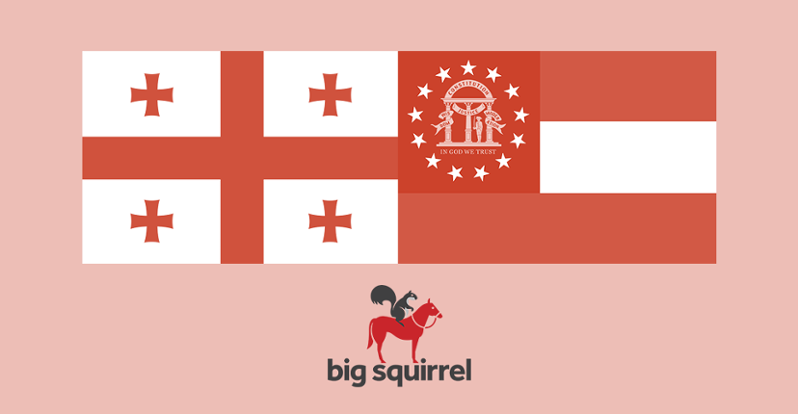
by bigsquirrel | Aug 9, 2017 | Innovative Brand Research, The Qualitative Difference
Killer business instinct. It’s praised in business and critical for any growth strategy. But no one relies on instinct alone. Great CMOs, Insight Managers and VPs of Business Development know research informs their killer instincts. New products and services and reinvented old ones all require research when your company is ready to put together a marketing strategy.
Quantitative research is familiar and reliable. It yields deep pools of data and statistics. Customers are polled about their experience and are asked to distill their feelings about a brand, product or service. Certain quantitative research may also rate a consumer’s degree of internalized brand loyalty or preference
Numbers are powerful, but they only take you so far in understanding your consumers and your brand. Data tells you what people’s intentions are – what they think they would do or choose or what they plan to do or have done. But deeper meaning that identifies behaviors and taps into opinions, beliefs, cultural nuances and feelings simply cannot be quantified.
Enter the ethnographic approach to solving problems.
Crack the Nut
At Big Squirrel we believe that “cracking the nut” for your brand is based on talking to people. It’s about spending time with consumers in the environments where they live, breathe and interact with your category, your competitors and your brand. It involves revealing truths that lie beneath the surface of what someone says, getting to the heart of what they really mean.

We don’t come to the table with a hypothesis, assumption or guided questions that manipulate responses. Instead, we engage in meaningful conversation with you and your consumers to develop a deep understanding of the challenges your brand faces. We then reach into our bag of tools and ask probing questions that inspire people to thoughtfully consider their own reality in new ways. We observe the unscripted product and brand interactions people have in real-time, in real life settings.
To truly gain a competitive advantage for your brand, you must push hard to get beneath the surface. We look for patterns that identify what unites people–no matter their lifestyle or demographics. We identify what is trending and what driving these trends, taking into account how these findings and insights translate across cultures, whether it is Atlanta, Georgia or Tbilisi, Georgia.
Brands who come to Big Squirrel aren’t looking to get more data on their consumer or product experience. They’re not trying to gauge brand loyalty to complete a report. Our clients are looking to master the understanding of their market to create a deeper impact across the entire brand. Ultimately, action must be taken from the results of our research, so we focus on identifying how to create deeper connections and more meaningful relationships with people.
Our projects are designed to use a proven ethnographic approach to move brands closer to their consumers. Taking a deep look at your brand through the lens of a qualitative approach might look something like this:
Industry at Large
- Who is innovating in the industry?
- What larger global trends may affect your industry positively or negatively either in the immediate future or in the long-term?
- What category conventions can you challenge and change?
- Are their cultural, regional or national issues on the horizon that could have a major impact on your company?
- What can you learn from other brands outside your category?
- What does it take to be a thought-leader in your industry?
Target Market
- What is the personal effect your product or service provides?
- How does your loyal consumer perceive your brand? How is this different from other consumers?
- What are the triggers that motivate consumers to engage with your brand? What are the hurdles that prevent engagement?
- Will your brand equity translate to a new generation of people or will your marketing message need revision?
- Are your marketing messages effective across the entirety of your brand footprint?
- How are influencers eroding your brand position?
- Is your target market changing?
- Is you brand promise still relevant to your most loyal buyer?
- Outside your category, who is doing the best job reaching this target market and what are they doing?
Competition
- Who do your consumers perceive as your actual competitor(s)?
- Is there a dominant competitor in your market?
- How does your company deliver your solution to the target market differently than your competitors?
- Is another company or approach to what you provide currently disrupting your established flow of consumers?
When the numbers aren’t enough, we’re ready to go deeper. Here’s how we’ve moved beyond the numbers to reveal intimate and personal stories that demonstrate how to better connect people to brands:
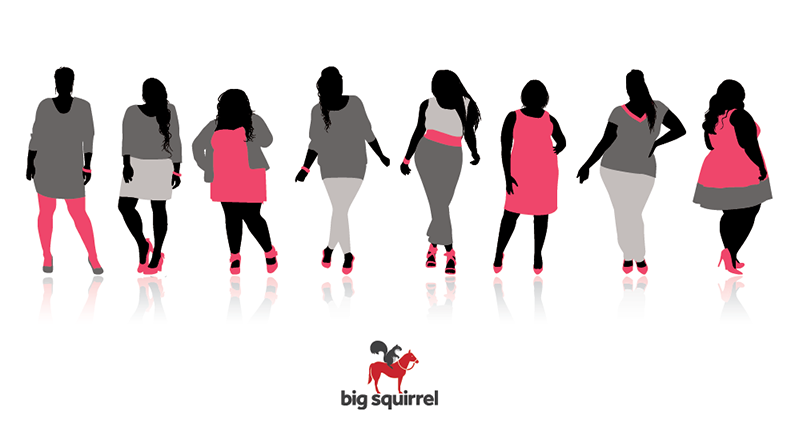
by bigsquirrel | May 17, 2017 | Innovative Brand Research
 Lately it seems like everyone is jumping on the plus sized bandwagon. With mainstream clothing brands like JCrew expanding the sizes they carry in store (and posting apologetic notes about it) to mid-market brands like Target creating their own plus line of clothing, brands and retailers of all kinds are trying to clue in to the needs of a dramatically underserved market. Since plus apparel is a rapidly growing area of retail — US sales of plus apparel rose 6% in 2016! — it’s no wonder that brands and companies want to get in on the money to be made — and fast! But meeting the needs of plus women will be about more than just making clothes in her size.
Lately it seems like everyone is jumping on the plus sized bandwagon. With mainstream clothing brands like JCrew expanding the sizes they carry in store (and posting apologetic notes about it) to mid-market brands like Target creating their own plus line of clothing, brands and retailers of all kinds are trying to clue in to the needs of a dramatically underserved market. Since plus apparel is a rapidly growing area of retail — US sales of plus apparel rose 6% in 2016! — it’s no wonder that brands and companies want to get in on the money to be made — and fast! But meeting the needs of plus women will be about more than just making clothes in her size.
Based on our research and work with plus women, we predict brands playing in and entering this market will face two key challenges: culture and consumer.
CHALLENGE #1: Culture is slow to change.
One of the biggest challenges facing brands entering the plus market is that culture hasn’t quite caught up. Plus women are acutely aware of the differences between plus and non-plus. Non-plus sets the standard in retail, fashion, advertising and inspiration. There are a multitude of sources that represent a vast diversity of styles for non-plus women — just flip through any mainstream fashion magazine on any give day. When plus women are featured, it’s “a thing” and there are only a handful of plus models that are considered to appear in mainstream fashion magazines. How many magazines does Ashley Graham have to appear in before she’s recognized for her beauty and not her beauty AND her size?
The current offering for plus women at retail further reinforces cultural norms that non-plus is the place to be. In most department stores, non-plus is prominently featured with mannequins outfitted from head-to-toe in trendy clothes with details and embellishments. There’s a huge selection and variety of styles to choose from and a wide range of price options. Plus is usually relegated to the back of the store, with a small and cramped space that lacks the same selection, details, style and pricing options. Worse yet, many stores have the plus section next to the maternity section. (No, we’re not kidding — have a look next time you’re in a department store.) This type of treatment makes plus women feel like second class citizens. They are clearly an after-thought, not a valued consumer. It’s the brand and retailer’s onus to take responsibility for their treatment of plus women, helping to shift cultural norms in a direction that’s more positive for plus.
CHALLENGE #2: All plus women are not the same.
Many brands entering and playing in the plus size market are looking at plus women as a group rather than individuals. This is a complex, dynamic group of women with differences in attitudes, opinions, lifestyles, and preferences. It may sound like a given that not all plus women are the same, yet this group gets treated by brands and retailers as if they all want exactly the same thing. One huge misconception is that plus women want to be smaller or are ashamed or embarrassed by how they look. Brands and retailers create clothes for plus women that cover and hide instead of accentuating and flaunting. Many plus women are completely comfortable in and extremely proud of their bodies, but are limited by the choices and styles that brands and retailers are providing them. Fashion for all women is a means of self-expression. Imagine how it must feel for plus women not to be able to express themselves and have brands and retailers that support a positive self-image?
Understanding how individual plus women feel about their bodies, their different life stages, and where they find inspiration will be the foundation for key points of difference for brands and retailers that want to speak to plus women. No amount of focus groups and surveys will paint an accurate picture of the differences in experiences and attitudes of these women. Really understanding this dynamic group means getting to know them on a deeper, more personal level. It means living with them, shopping with them, listening to them and recognizing their individual needs, feelings, desires and expectations. Understanding the subtle nuances will enable brands and retailers to take the steps necessary for plus women to feel valued, inspired and excited.
What should brands and retailers entering the plus market do?
As the rush to plus continues, it may be a good time for brands and retailers to pause for a minute to ask themselves some key questions: How can brands and retailers help to positively shift cultural norms in favor of plus women? And how can they get to know plus women on a deeper, more personal level to better meet their needs, expectations and desires? With a little focused effort, there’s a lot of opportunity for brands and retailers to minimize the gap between plus and non-plus and to provide a positive and inspiring experience for a group of women who have been overlooked for too long.
Keep in mind, this isn’t a problem for just the plus market. All brands and retailers should get to know any audience they serve on a deeper level along with gaining an understanding of the cultural context that influences experience, desires, and decisions. This is the key that enables the delivery of a meaningful, unique, and memorable experience in a crowded market.
Interested in getting to know the plus consumer (or any audience) on a deeper level?
We would love to help! Let’s start a conversation.
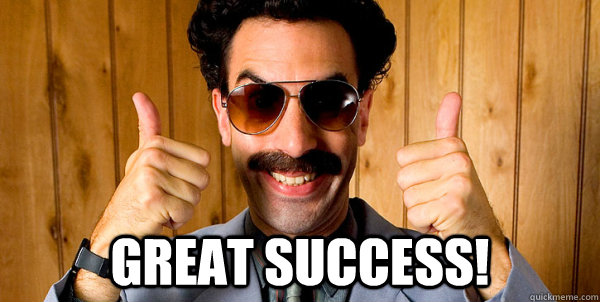
by bigsquirrel | Nov 10, 2015 | Uncategorized
Whether you are a brand or an individual, the ability to achieve success is built on a foundation of 3 decision-making filters:
1. CORE VALUES
Your core values are the things that you believe in. They define you or your brand in terms of what you think is important. Think about your own core values. If you are thinking things like HONEST or TRUSTWORTHY, throw these out. These are table stakes.
Coke has done a great job in defining their core values. Regardless of what you may think of their products, these values are rock solid and provide a great filter how to act: from Coke’s point of view, does what we do or offer embody these values: uplifting refreshment, universal connections and stubborn optimism?
Your core values guide your behavior. Knowing what your core values are helps you know how to act with consistency and focus.
2. DIFFERENTIATION
Too often, we see brands try to differentiate based on WHAT they do. “WHAT” you do is not something special. There are many others who do what you do. It is WHY you do what you do that makes you special.
When you articulate why you do what you do, it allows you to stand out from the crowd in a way that cannot be copied.
Nike sells shoes – that’s what they do. But, so does Reebok, adidas and many other brands. Nike differentiates itself based on why – and that is a philosophy to bring innovation and inspiration to every athlete in the world. This WHY guides their marketing and product development to focus on who you are and who you want to be – which in turn leads to success because they are able to create a powerful connection between the brand and consumers that has nothing to do with the shoes or the WHAT they do.
3. MISSION
Your Mission is about your aspiration for your future and how to act to bring this to life today. Having a strong mission provides you with a clear path to follow. It brings together the future and the present. Too often, we see brands stuggle to be succesful because they are only focusing on the future or the present in isolation.
Starbucks mission is to inspire and nurture the human spirit, one person, one cup, one neighborhood at a time. This filter aligns employee actions with the hopes of the brand. Future goals married with present actions.
Think about what your mission is and ask yourself if you daily actions are advancing you to realizing your goals and if the answer is no, then you are limiting your own chances for greater success.
In summary, remember the key decision making filters for success are three things: articulating and acting on your core values, defining your point of difference based on why you do what you do and acting in a way that marries your future goals with your daily actions.
Big Squirrel is a brand consultancy that fuels curiosity and wonder about people, culture and brands.
We are happy to answer any questions or help you or your brand find greater success!
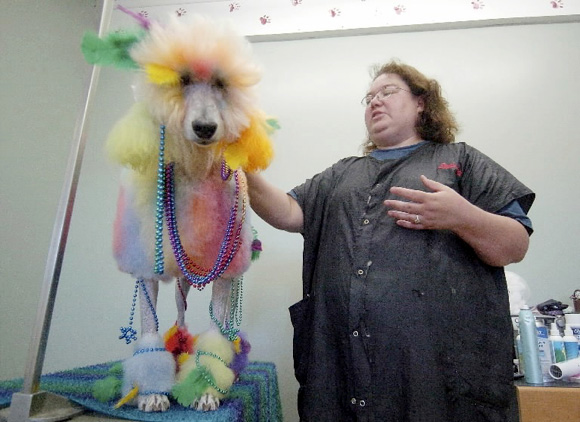
by bigsquirrel | Sep 15, 2015 | Uncategorized
Although birthrates have continued to decline over the past 10 years and have hit an all-time low this year, it certainly doesn’t mean people have given up the idea of having a family. In fact, during this same 10 year period, pet ownership and spending has sky rocketed to unprecedented proportions.
Meet Lassie, the new urban baby.
Pet owners are fanatical about their pets. Organic dog food, low-fat cat treats, acupuncture post-surgery therapy and dog spas are common place in today’s pet owner’s world. Gone are the days that your dog waits in the backyard for you to get home from work. Dog owners now drop Fido off at doggie-daycare, where he gets groomed, walked and entertained for 8 hours and the proud owners can log in to see Fido via the doggie-cam throughout the day.
Kaya isn’t just my dog, she’s my family. I plan my day around what we’re going to do together, what she’ll enjoy, what will make her happy. I can’t imagine just going off to work and throwing her in the backyard by herself all day. I wouldn’t like that, so why should she?
Dog Owner
The first step in understanding pet owners today is understanding the different mindsets people have around what it means to own a pet. People are so passionate about their pets that to stop at saying they are family members would be a mistake. Pets represent even more.
Pets aren’t just part of the family. Pets are your personal brand.
I buy my dog special food, I get him groomed every other week, I have his nails done and his ears cleaned. He gets acupuncture once a month and goes to doggie day care 4 times a week. I do all those things because I want him to look good and be happy because that says I’m a good dog owner.
Dog Owner
I have 2 dogs and 2 cats. They fight. They play. Some days they hate each other and some days you see them all sleeping together on the couch. I imagine it’s not that much different than having kids. You just have to teach them how to get along and accept that they are all different. Some days you look at them and think they are angels and some days you don’t. But, at the end of the day, I love them all.
Dog & Cat Owner
We definitely plan things around what we can do with the dog. We camp so the dog can be with us. I started running so we could exercise together. And we drive now instead of flying so the dog can join us on family vacations. I wouldn’t dream of doing anything without considering how it affects Floyd.
Dog Owner
Pets know you better than your human friends.
Oscar just seems to know when I’m feeling low or when I need to laugh. He has a radar that understands me like no person ever has.
Dog Owner
We don’t just train our pets – we try to understand their psyche.
It’s not enough that Sandy comes when I call him. I want him to tell me what he wants and what he needs. And he does. In his way. I am just learning what his way is and what it means.
Cat Owner
There’s nothing rational about how much money people will spend on their pets.
My boyfriend and I broke up and we decided to have joint custody of our dog, Simone. He’s in NY and I’m in LA so every month we trade off which means one of us has to fly across the country to pick up the dog. Is that extreme? Maybe, but it’s better than not having Simone in my life.
Dog Owner
Pets reflect the qualities we desire in people.
Shelby’s my tester – if she doesn’t like you, then no second date. If she jumps on your lap and is happy to see you, even if you just met, then I know you’re okay. She’s a great judge of character.
Cat Owner
There are 81 million homes in our country alone that boast either a cat or dog today. And there is a lot more to this industry than selling dog food. Pet owners are not only fanatical, but extremely loyal and passionate.
Pet owners spend time researching the best treatments, brands and care options. They want to spend money on their pets and are willing to spend lots of it to the point of irrational (pet spending hit $34.4 billion in the US alone last year according to the American Pet Products Manufacturers Association).
All this points to a growing target audience that expands the idea of pet ownership beyond just simple companionship and the role of the pet extends to more than just a family member.
We’d love to hear your thoughts – what role does your furry friend play?
Comment below or get in touch with us for more insights on the role of pets and their meaning in our lives today.

by bigsquirrel | May 16, 2014 | Uncategorized
Big Squirrel recently spoke at a DesignSpeaks event in Portland, Oregon on the topic of research and developing brand strategy. Our focus? YOU ARE DOING IT ALL WRONG. Research is an interesting topic to explore. It is a lucrative industry that has yet to evolve much since the 80s. Focus groups and quantitative surveys still dominate the pack, but are these the most effective ways to really get closer to people and learn about what influences how they think, feel and act? To be impactful, research needs to be creative, interesting and engaging for everyone involved. Gone are the days of sitting behind the glass eating M&Ms while a moderator asks participants to rate the likelihood of purchasing one toothpaste over another. Research should provide insights into how people really live and make decisions.
So where do we start?
We have to understand that everything is different now and how people live is fundamentally changing, including the ways we define ourselves, our relationships, how we’re influenced and who is influencing us, and the various media we use to express ourselves. Not only is the way we live different, our expectations for what we want from brands has changed as well. Hope is no longer enough to sustain us. Every consumer now has a voice and believes it should be heard. Using that voice and sharing is the new social currency, which means it is now more important than ever before for brands to listen to and respond to consumers.
What does this mean for research and insight development?
A lot of time and money is spent behind the glass of focus groups. This reveals intention, Not true action. Intention gives us an unrealistic perspective whereas action shows us real human behaviors. As researchers, the best way to get past intention to understand real human behaviors and what drives action is to change what we do and how we do it.
Regardless of how big or small a brand is, there are some universal ideologies behind what it takes to conduct great research and get to the heart of what motivates and influences how people think, feel and act is universal.
THESE ARE OUR 7 GOLDEN RULES OF RESEARCH:
 Rule #1
Rule #1
Who a person is today is often very different from who they want to be.
Everyone has dreams and aspirations. Research should provide a perspective on who a person is right now versus who they want to be, identifying opportunities for how a brand might help them bridge this gap.
Rule #2
People are stupid. But they are still people, not data points.
Demographic profiles don’t tell you what is important to know about someone. Research needs to help identify segments that are based on actions and behaviors, attitudes and beliefs, not age, gender or product usage.
Rule #3
If you have an agenda to prove, you will prove it.
Research isn’t about soothing egos, proving a point or killing creative. Research is about learning. So, ask yourself: are you willing to be wrong about everything you think you know about a consumer, a brand and the category? If you aren’t, then you have an agenda to provide and you shouldn’t do research.
Rule #4
Live with people, in their environment, in the moment.
There’s no replacing actually talking to people and the best environment to do this is on their own turf. If you want to learn about how people really use a product or feel about a brand, you have to be with them in the moment of consumption.
Rule #5
What you see is as important as what you hear.
People will always tell you they don’t watch TV or they aren’t influenced by advertising. But, this doesn’t mean it is true. Research should be done with someone in their environment so you may observe their behaviors and see for yourself what is really influencing their decision making.

Rule #6
What people say and what they mean are not the same thing.
You have to remember it is not always easy to articulate thoughts and especially feelings. You may have to ask the same question in different ways or come up with games that help people to connect the dots so they can successfully articulate their real emotions.
Rule #7
Seek the universal truth(s).
Too often, research is designed to look for differences as opposed to understanding what truly unites an audience. The big insights that are universally shared by an audience are the things that will allow you to create a brand that has genuine impact.
Research should provide insights into how people act and what influences how they think and feel.
When you conduct research that is designed to get at what people love, what they hate, what makes them tick and what excites them, you will be able to identify real insights and craft a brand strategy that is emotionally charged and relevant, allowing you to connect with your audience in the way you intend.
It’s time to stop wasting money and energy conducting research that doesn’t yield real results.
________________________________________________________
Got a nut to crack? We’d love to help you!
Please feel free to reach out to us with any thoughts, comments, or questions.
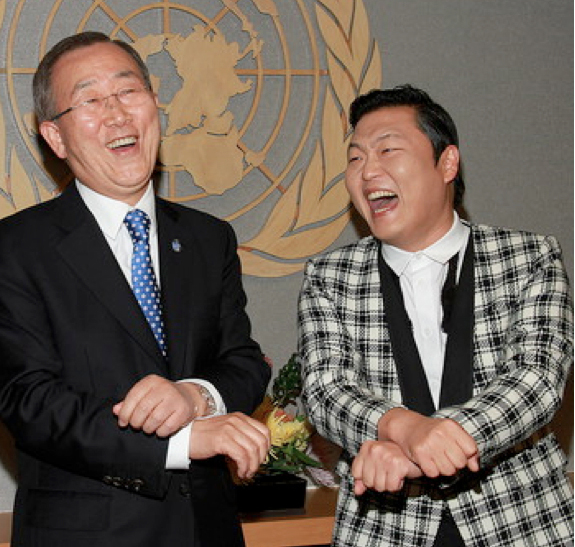
by bigsquirrel | Oct 25, 2013 | Uncategorized
Increased global connection and collaboration has led to the blending of cultural values. In the West, there are new examples of the importance of an individual’s contribution to community despite the West being a culture that’s traditionally driven by the pursuit of individual success. In the East, societies with a long-held focus on community (from the nuclear family to the citizens of a nation) are now placing more value on the unique contributions of individuals.
Consumers are able to look to any culture in any part of the world and adopt any part of its philosophies as their own, literally picking and choosing what is best for them.
Why is this important?
Thanks to technology and new media, people have exposure to cultures other than their own to draw from, learn from and feel connected to. Now able to confidently blend cultures, consumers continually create or recreate, adopt or alter the philosophies, beliefs and practices of any given culture in the world, based on what best suits their needs at any given moment, for any situation.The desire to dabble has grown and we’re witnessing a much more fluid consumer who is willing to look outside their own borders to find entertainment, creativity and ways to express themselves.
The most important takeaway we see coming out of the Cultural Blending movement is a consumer shift from Global Citizen to Global Explorer. Global Citizens observe and visit other cultures out of interest and personal enjoyment. They watch, learn and listen – but always maintain their own cultural sensibilities. The emerging Global Explorers are actively pursuing, adopting and blending the philosophies, beliefs and practices of new cultures as a way to discover and create their own unique experiences.
Here are a few examples that we have come across that bring to life the Cultural Blending Movement and showcase the shift towards a Global Explorer:
EMBRACING MUSIC WITH DISPARATE ROOTS

Thanks to technology, consumers all over the world have exposure to the talents of music and musicians that would not have normally “made it”. From top selling Colombian artist, Shakira, to the mainstreaming of electronic music genre Dubstep from the UK, to the popularity of South African band Die Antwoord, consumers are adopting the music of other cultures and making it a part of the mainstream global culture of today. The explosive success of Korean pop sensation PSY demonstrates not only the willingness of the Majority World to embrace music that originates from a culture other than their own, but the absolute power of the individual to adopt cultures and blend them to create his or her own identity.
MERGING CULTURAL CUES WITH FAST FASHION
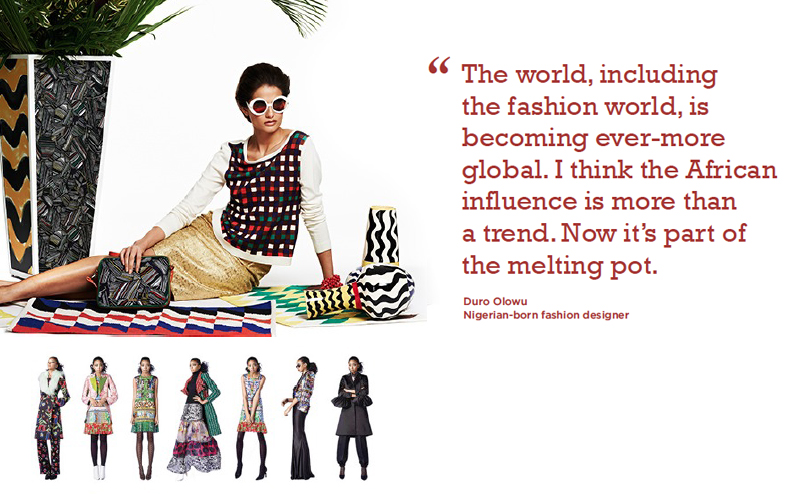
Consumers have the confidence to adopt the visual cues of a particular culture as part of their own fashion, despite where they live in the world. JC Penny chose to do their first designer collaboration with fashion designer Duro Olowu.
BLENDING BORDERS THROUGH ARCHITECTURE
 The field of architecture has historically pulled from the cultures it exists within. Over time, the cultivation of an aesthetic standard for “African”, “Spanish”, and “Roman” architecture emerged. As technology and new media have emerged, the vast physical distances and cultural and geographical boundaries that once separated regions have begun to fade. Architecture has become one of the many fields pulling from the new and growing pool of cultural resources, as architects and designers continue to incorporate other “outside influences” into their work.
The field of architecture has historically pulled from the cultures it exists within. Over time, the cultivation of an aesthetic standard for “African”, “Spanish”, and “Roman” architecture emerged. As technology and new media have emerged, the vast physical distances and cultural and geographical boundaries that once separated regions have begun to fade. Architecture has become one of the many fields pulling from the new and growing pool of cultural resources, as architects and designers continue to incorporate other “outside influences” into their work.
One example of this cultural blending in architecture is seen in the work of Grafton Architects, a firm based in Dublin, Ireland who teamed up with Brazilian architect Mendes da Rocha in last year’s Venice Architecture Biennial. Together they created an interpretive design piece that took inspiration from both cultures to envision a new aesthetic, which represented a fusion of cultures and places.
MIXING MEDICAL AND SPIRITUAL TRADITIONS
 Though the ancient practice of Yoga originated in India, its popularity has spread across the globe. The map above from the Marshall Index demonstrates where the term “yoga” was most frequently used last year. Although this is not a new trend, yoga and other practices like acupuncture and meditation continue to spread and are no longer limited to Eastern cultures. Instead, these philosophies are continuing to permeate the daily practices of consumers all over the world, even making their way into non-traditional arenas like hotels and airports.
Though the ancient practice of Yoga originated in India, its popularity has spread across the globe. The map above from the Marshall Index demonstrates where the term “yoga” was most frequently used last year. Although this is not a new trend, yoga and other practices like acupuncture and meditation continue to spread and are no longer limited to Eastern cultures. Instead, these philosophies are continuing to permeate the daily practices of consumers all over the world, even making their way into non-traditional arenas like hotels and airports.
As cultures blend, consumers are becoming more likely to stray from the traditional practices of their own societies and dabble in the rituals of others. This mélange of traditions is also fueling creativity, leading to the development of new takes on old practices, like anti-gravity yoga, enabling consumers to confidently blaze trails into non-traditional territory.
TELLING STORIES FROM ANY PERSPECTIVE
 The critically acclaimed film Life of Pi received 11 Oscar nominations, reaffirming that it tells a uniquestory. Also unique is the story behind Life of Pi. The book and film tell a vivid tale of an Indian boy from Pondicherry who survives a shipwreck and is stranded at sea with a Bengal Tiger. The details of this boy’s life feel so vivid, readers likely assumed the author was well versed in Indian culture. However, Life of Pi was written by Canadian author Yann Martel, whose first language is French. Martel is so confident in his storytelling, he creates a tale that taps into the universality of mankind, making an Indian boy’s journey completely relatable to anyone in any culture. Tasked with the difficult challenge to translate this story to film was Taiwanese director Ang Lee. A Canadian author telling the story of an Indian boy, brought to life on the big screen by a Taiwanese director, Life of Pi is an example of the power of blended cultures to give creative minds the confidence to tell unique and true-to-life stories from any perspective.
The critically acclaimed film Life of Pi received 11 Oscar nominations, reaffirming that it tells a uniquestory. Also unique is the story behind Life of Pi. The book and film tell a vivid tale of an Indian boy from Pondicherry who survives a shipwreck and is stranded at sea with a Bengal Tiger. The details of this boy’s life feel so vivid, readers likely assumed the author was well versed in Indian culture. However, Life of Pi was written by Canadian author Yann Martel, whose first language is French. Martel is so confident in his storytelling, he creates a tale that taps into the universality of mankind, making an Indian boy’s journey completely relatable to anyone in any culture. Tasked with the difficult challenge to translate this story to film was Taiwanese director Ang Lee. A Canadian author telling the story of an Indian boy, brought to life on the big screen by a Taiwanese director, Life of Pi is an example of the power of blended cultures to give creative minds the confidence to tell unique and true-to-life stories from any perspective.
Even more recently, the film Gravity gives us a perspective from beyond the planet, extending our familiarity and feeling of “home” to new heights. The Global Explorer is now going beyond the globe.
FOCUSING ON PERSONAL ASPIRATION
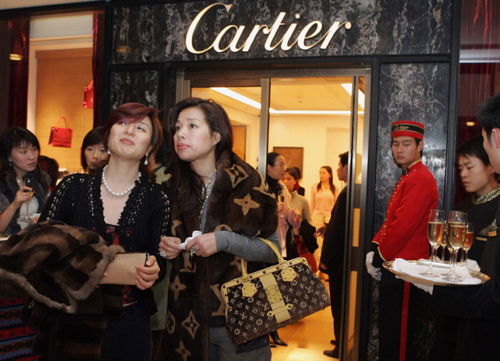 The American Dream as a concept has been alive and well in the United States since the term was first coined in the 1930s. As the global economy continues to grow and change, however, the American Dream is expanding well beyond its original borders. Countries with traditions of self-sacrifice are now experiencing a newfound wealth that enables frivolous spending, shifting the focus from “we” to “me”.
The American Dream as a concept has been alive and well in the United States since the term was first coined in the 1930s. As the global economy continues to grow and change, however, the American Dream is expanding well beyond its original borders. Countries with traditions of self-sacrifice are now experiencing a newfound wealth that enables frivolous spending, shifting the focus from “we” to “me”.
With a powerful middle class continuing to emerge in China, The Boston Consulting group asserts that the country is “poised to become the world’s biggest personal luxury market by the year 2020.”(Harvard Business Review) The new luxury market in China is confidently leaving behind socialist traditions and adopting Western attitudes of personal fulfillment through conspicuous consumption.
The American Dream is no longer solely American. A new version of The American Dream is emerging in China as individual expression and personal freedoms move to the forefront of consumerism.
What do think of the cultural blending movement and the emerging Global Explorer?
We’d love to hear your thoughts.
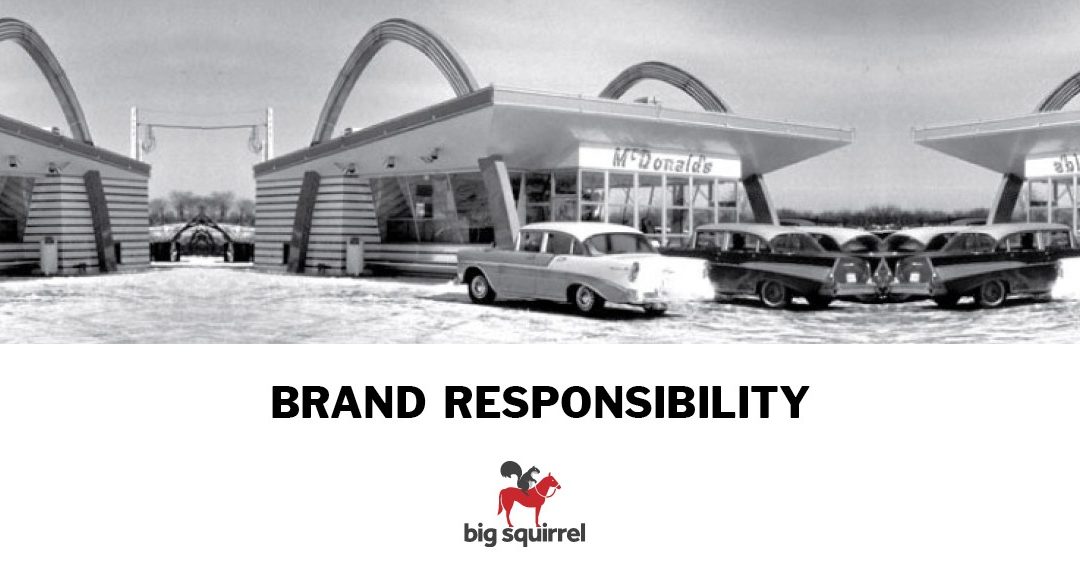
by bigsquirrel | Sep 18, 2013 | Innovative Brand Research
What is the role of a brand when it comes to responsibility?
And we aren’t just talking about social responsibility and environmentalism, but the kind of responsibility that’s about helping consumers make good – or better – choices.
McDonald’s is at an interesting brand to consider when it comes to responsibility. For a brand that does so much good in the world – from the Ronald McDonald House to the Global Women’s Initiative – it is hard to believe that this same company also sells (gulp) fast food that has been accused of contributing to our country’s growing problem with obesity. Questions concerning responsibility are becoming more complicated. Should a fast food chain be held accountable for a problem it didn’t necessarily create? Or for that matter, should the brand be blamed for contributing to social issues just because the products it sells are unhealthy? Is McDonald’s any more guilty of promoting an unhealthy lifestyle than brands like Captain Crunch or Hershey’s? Where do we draw the line and who draws it when we begin to think about and debate brand responsibility?
McDonald’s is clearly thinking about this and has taken significant steps to respond to the growing trend of healthy living. They’ve expanded their product offering to include more health-conscious options like salads, milk, and apple slices. But, is this enough? Or are we to believe that the good they do as a company is enough to make up for selling fatty Big Macs?
For our first brand case study, we decided to explore the role of brand responsibility by taking a closer look at how McDonald’s is walking the line.
There are 6 key things that McDonald’s does that enables the company to give customers what they want (amazing french fries) while maintaining a sense of social responsibility:
1) MCDONALD’S MAINTAINS A HIGH LEVEL OF TRANSPARENCY THAT BUILDS TRUST WITH
CONSUMERS AND EMPLOYEES.
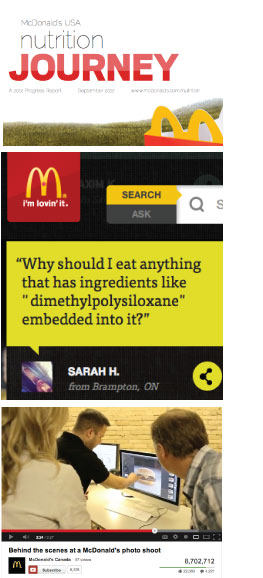 Example: Nutrition Progress Report
Example: Nutrition Progress Report
In 2012, McDonald’s published its first ever nutrition progress report, revealing the company’s nutritional performance over the past year. The report is easily accessible online to anyone who is interested. For the report, McDonald’s hired Ernst & Young LLP to conduct an independent examination of McDonald’s progress against its commitment goals. The report highlights focus on three key nutrition commitments: Children’s Well-being, Nutritionally Balanced Menu Choices, and Nutrition Information and Education.
Read more directly from McDonald’s here.
Example: Our Food. Your Questions.
In 2012, McDonald’s opened up communication lines with the social media campaign and website called “Our Food. Your Questions,” that allows customers to submit queries to McDonald’s Canada, which then answers some of them with videos.
One result of this campaign is a very honest, behind the scenes look at why a McDonald’s burger in an advertisement looks so different than one a consumer purchases in the restaurant. With this kind of open communication present, consumers instill more trust in the brand.
See the YouTube video here.
2) MCDONALD’S MAINTAINS AN OPEN AND FLEXIBLE FRAMEWORK THAT HONORS LOCAL PREFERENCES.
Example: Global Parents’ Table
McDonald’s established a global Parents’ Table in March, 2012. The membership is comprised of 10 parents and dads from the U.S., U.K., Australia, France, Spain, Brazil, Mexico and Taiwan. McDonald’s met with the Parents’ Table twice to focus on how the company can play a positive role in children’s well-being.
Read more directly from McDonald’s here.
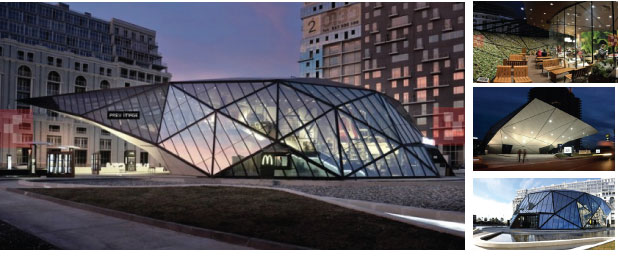
Example: Giorgi Khmaladze designed space in Georgia
McDonald’s embraced a design by architect Giorgi Khmaladze in Batumi, Georgia, leaving behind cues that are commonly associated with the restaurant. The result is a stunningly modern space that takes brand into an entirely new space and creates a new experience for the average McDonald’s customer:
On the inside there is a creative use of space, semi-private seating, beautiful wood paneling, and what appears to be some sort of grass field in the upper part of the building (where it is the most tapered). The grass area is actually an elevated garden with huge skylights, so people can eat small, rectangular apple pies with a natural backdrop and lot of sunlight.
Read more about the McDonald’s of the future on geek.com and on PSFK.
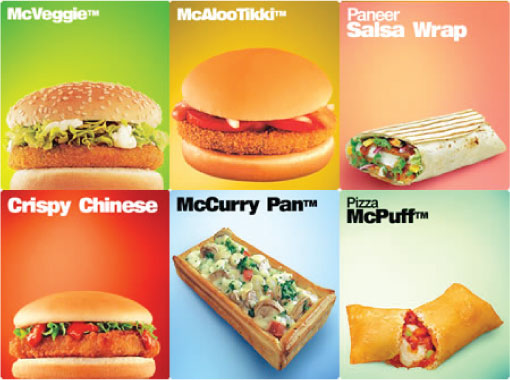
Example: Regional menu items
McDonald’s doesn’t simply duplicate local cuisine, rather the corporation puts a “McDonald’s twist” on it, creating menu items that incorporate local flavors but that maintain a sense of consistency and fit the brand. McDonald’s maintains a sensitivity to local customs and preferences and creates menu options using local suppliers. For example, when they introduced the Parmigiano Reggiano burger in Italy, they formed an alliance with the official Consortium of Parmigiano-Reggiano, made up of 650 small, artisanal cheese producers in Northern Italy.
Read more directly from McDonald’s here.
3) MCDONALD’S IS IN TOUCH WITH THE NEEDS AND VALUES OF CONSUMERS ACROSS THE GLOBE.
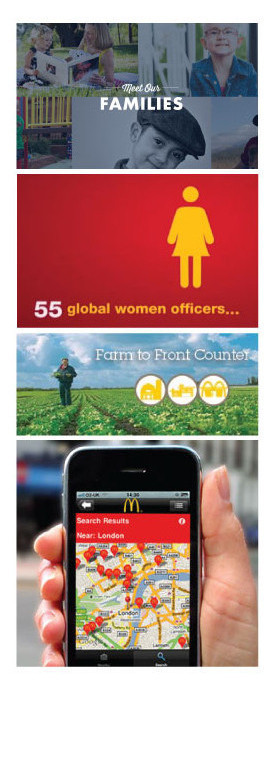 Example: Ronald McDonald House Charities
Example: Ronald McDonald House Charities
The mission of Ronald McDonald House Charities (RMHC) is to create, find and support programs that directly improve the health and well being of children. The House program provides a “home-away-from-home” for families so they can stay close by their hospitalized child at little or no cost. McDonald’s Corp. is the largest corporate donor and McDonald’s employees are dedicated volunteers. Owners / operators participate in local and global RMHC board.
Example: Global Women’s Initiative
Supports the recruitment, development, and advancement of women at all levels of the company while creating a culture where women have the opportunity to succeed and grow.
Watch the YouTube video here.
Example: 5 sustainability focus areas
McDonald’s sustainability efforts expand beyond just the environment and into general well-being. The overarching goal of McDonald’s sustainability efforts is focused on continuous improvement through five focus areas: Nutrition & Well-Being, Sustainable Supply Chain, Environmental Responsibility, Employee Experience, and Community.
Example: Mobile Payment App
McDonald’s is currently testing a new mobile app that lets customers order via mobile phone and pick up food in stores, curbside or at drive-thru windows. As we move closer to a cashless society, McDonald’s is looking for ways to incorporate new technologies into the brand experience.
4) MCDONALD’S MASTERFULLY BALANCES VALUE (BUYING) AND EXPERIENCE (SHOPPING).
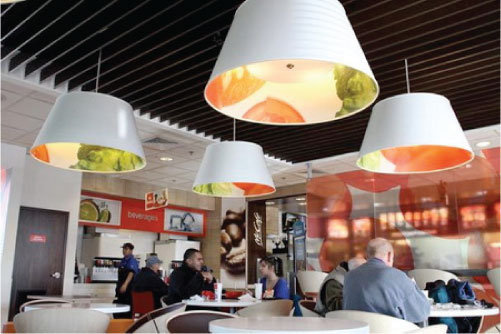
Example: McDonald’s restaurant remodel
McDonald’s recognizes the importance of creating an experience that matches the direction in which the brand is headed. By beginning a $2.9 billion remodeling effort in 2012, the brand hopes to “gain broader acceptance for top-tier times that are already on the menu like smoothies and Angus burgers and to better compete with the fast-casual industry.”
Keeping pace with the changing lives of consumers, “the company is moving to seating “zones”: slow zones for coffee sippers enjoying the Wi-Fi, fast zones at high bar tables for single diners wolfing down a sandwich and family zones with booths for parents to “lock” their children on the inside to prevent them from wandering.”
This remodel effort combines McDonald’s value with the quality and comfort of a higher-end restaurant, creating a better overall brand experience.
Read more about McDonald’s remodel in the Chicago Tribune.
5) MCDONALD’S EMPOWERS EMPLOYEES AND CUSTOMERS TO BETTER THEMSELVES.
 Example: Hamburger University
Example: Hamburger University
In 1961, McDonald’s founder Ray Krocs launched a training program, later called Hamburger University, at a new restaurant in Elk Grove Village, Illinois. There, franchisees and operators were trained in the scientific methods of running a successful McDonald’s. Hamburger U also had a research and development laboratory to develop new cooking, freezing, storing and serving methods. Today, more than 80,000 people have graduated from the program.
Example: Diversity Curriculum
McDonald’s has developed an internal “diversity curriculum” that teaches employees how to move from awareness to action in the area of inclusion and intercultural management.

The courses include:
Asian Pacific Middle East Career Development
Black Career Development
Hispanic Career Development
Lesbian Gay Career Development
Women’s Career Development
Intercultural Learning Lab
Read more about McDonald’s diversity program in Forbes.
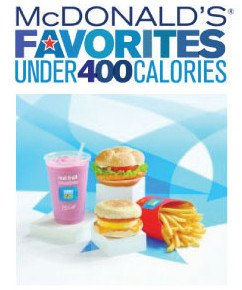 Example: Menu expansion
Example: Menu expansion
McDonald’s strives to help consumers make more informed choices. Over the past few years they have expanded the menu to include low calorie items like smoothies, egg whites on breakfast sandwiches and the sandwiches that include cucumbers and other vegetables. According to McDonald’s CEO Don Thompson, the chain’s best known items, such as Big Macs, fries and chicken nuggets, account for just 25 percent of the chain’s sales.
In 2012, McDonald’s introduced a “Favorites Under 400” menu that highlights the calorie information for items to help put calorie counts into context for customers. They company also promised to list calorie counts on restaurant and drive-thru menus.
McDonald’s is also introducing a voluntary nutrition e-learning program for their employees to help build employees’ knowledge of calories, nutrition and McDonald’s menu offerings.
Read more about McDonald’s and nutrition in the Chicago Tribune.
6) MCDONALD’S GIVES CONSUMERS CONTROL BY ENABLING THEM TO MAKE INFORMED DECISIONS.
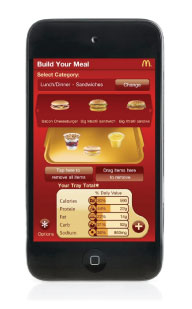 Example: My Meal Builder & McDonald’s App
Example: My Meal Builder & McDonald’s App
McDonald’s enables customers to access nutritional information quickly and easily for all of McDonald’s food and beverages through their app and website. Consumers can create and tailor meals that suit their individual needs using the My Meal Builder feature on the website. McDonald’s has also begun including calorie information on their overhead menus and drive-up menus.
What role do you think brands should play in influencing the decisions we make as consumers?
We’d love to hear your thoughts.
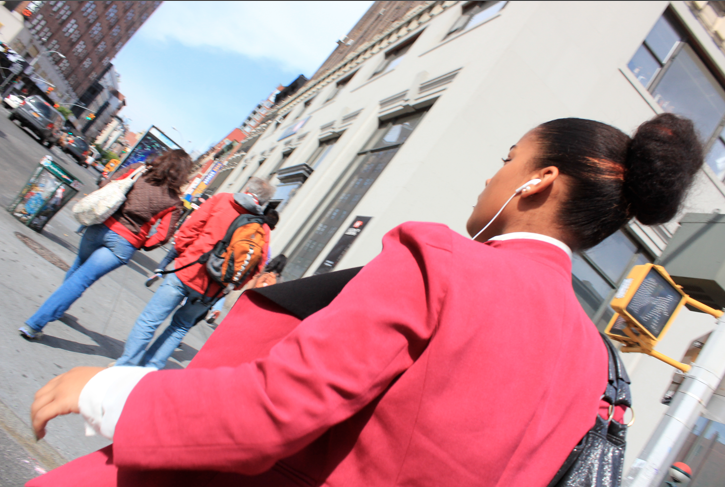
by bigsquirrel | Jul 15, 2013 | Uncategorized
Teens. Who are they? In a nutshell, they are a mass of contradictions: Realists at heart, yet they believe they can and will make a difference in the world. Savvy consumers, yet don’t think they are influenced by advertising. Overflowing with cynicism, yet happy and optimistic. Teens are totally self-absorbed and self-focused but purport to be very conscious about the environment and the social practices of businesses. And, finally, teens are brash, confident and have an in-your-face approach to life, yet they haven’t figured themselves out.
Teens are a tough nut to crack. They are in the process of defining both their world and themselves and each are constantly changing contradictions. They’re hyper connected but their world barely stretches beyond what is around them today; “global” is a term without real meaning but one that they use frequently. When it comes right down to it, they barely look at the world beyond high school. (And whose high school experience was really that great, anyway?)
Teens are redefining the rules of life.
How teens live.
Not only is the world around them changing fast, but their daily schedule is practically swirling around them. They have to juggle like crazy or (heaven forbid) the might miss someone or miss out on something. Juggling is innate for todays teens. For GenXers, it was an acquired skill. For today’s teen, it’s as natural as breathing.
Terms like “Internet speed” and “Social Media” are meaningless to teens since they’ve never lived without them. Life, as defined by technology today, is instantaneous. Need a book for school? Download it off Amazon. Want to see what your friend is doing on her vacation? Check out her Instagram feed where she’s posted today’s photos from Paris. Voilà! In fact, for the teen, social media isn’t a thing you do, it’s simply a way of life. Documenting and sharing even the most mundane moments (“Eggs for breakfast. #Nomnom.”) are just how teens live and express themselves. And more importantly, it’s how they connect with the world.
How teens think: It’s a wired world.
We invited teens to pizza night to talk about their lives. The first thing we did was to ask them to disarm themselves.
Oh. You mean turn off my phone?
It was as if the concept of turning it off was totally new. And they very begrudgingly obliged us. What is the concern here, we wondered? “Well, Joshua, my boyfriend is supposed to text me when he goes on break from work tonight. I can’t text him back since he’s at work, so I don’t want to miss him.” Anything pressing you need to talk to him about? “No, not really, I guess. I just want to talk to him.” Uh, but you’re texting, not talking? “Yeah, I guess. It’s the same thing.” Thus ensued some embarrassed giggling and knowing eye exchanges around the table. The message here: Being connected is a way of life. One senior told us, “My cell phone is one of the most important things I own. If I lost it, I’d feel lost.”
How teens feel.
Unlike other generations before, this group of teens believes that success is not necessarily based on hard work. IT JUST HAPPENS. In fact, they really believe it is going to happen to them in a way that it hasn’t happened for their parents. Given the dramatic shift in television programming over the last 10 years – the formative years of today’s teens – it’s not surprising that they not only embrace Reality TV, but think of themselves as their own stars. This change marks a significant shift in our culture where stars no longer have to be “movie” stars or models. One driving truth in this Reality TV craze is that teens love this in-your-face brutal honesty. To them, the crazier the better (hello, Snooky) and they no longer see a clear distinction between reality and what is real.
Thanks to this blurred distinction between real and reality, teens have developed an elevated sense of self. They think of themselves as being untouchable because they’ve always had the empowerment of the Internet and access to any information right at their fingertips. No waiting, no roadblocks, no delays. Just what you want, when you want it. They see themselves as undefeatable and interestingly, they have no heroes. They think of themselves as indestructible because while reality may be hard, like what they see on Reality TV, they can do anything. Have a problem? Fix it yourself. Want something? Charge it. Need some advice? Post your question online. Popularity is gauged by how many followers you have and cool is about how many likes your posts get.
They believe they can rise above their circumstances whenever they want. Right now, they just don’t want to.
Which leads to the “It’s all about me” attitude.
At the heart of the teen world, they don’t see a future. Masters of Zen, for teens there is only the moment in which they are living right now. Their decisions don’t really have consequences and at the very least, they believe that any consequences passed down are not going to have any lasting impact on how they live or what they do. Getting caught drinking is a nagging worry, but not because they have guilt over doing something they shouldn’t be doing. Instead, they worry they might have to miss the next party. To them, long-term is never more than a semester.
This lack of regard for the future or their actions makes it easy to mark teens as being predominately selfish. But, is this really true? Or is it perhaps, they just don’t know any better? Snarling in disgust, teen after teen will tell you:
Adults see us as troublemakers, babies, materialistic, selfish partiers.
They don’t think of us as people.
Ironically enough, blockbusters on screen continually perpetuate these negative stereotypes, but teens can laugh at themselves because they don’t believe the stereotype is true.
What teens value.
There is an ongoing, much heated debate over the burning issue around what teens value. The myth that marketers have rallied around is that teens prefer new, exciting, fresh experiences over comfort. But, that’s not always true. We’ve debunked the myths to get down to 4 real truths:
TRUTH #1: Teens seek comfort over cool.
This doesn’t mean cool isn’t important. It just isn’t the end-all, be-all of their world. Comfort is about establishing an environment and mindset that belongs just to you. It isn’t something that is shared with others and isn’t something they typically talk about either. But comfort items top the list when asked to name the possessions they couldn’t live without.
TRUTH #2: Teens crave the familiar.
They love nostalgia. Just look around their rooms. They surround themselves with pictures and photo albums, documenting their lives. “My photo albums contain my memories that I will always have a visual of.” Surrounding themselves by the familiar is really celebrating connections with the people in their lives. Favorite activities are typically hanging out with friends, spending time with boyfriend/girlfriend, having fun with others.
TRUTH #3: Convenience is a desired way of life.
Their whole lives are dictated by convenience. This is readily apparent in the value they place on their devices – their cell phones (“If I left home without my cell phone, it would be like going out without taking a shower. I wouldn’t feel right.” -Michael) their computers (“I usually get online and email and chat with my friends every night. If I couldn’t do that anymore I’d feel so cut off.” -Amy) and their cars (“Before I had my car, I stayed home most of the time. Now I can go wherever I want, when I want to go without waiting for my mom to give me a ride.” -Crystal).
TRUTH #4: Teens seek control – but passively.
Ask them what they believe, they say things like, “What is meant to be will happen.” They are cynical, yet have a very Zen attitude. Control over one’s life is important, like setting the rules on what to do and how you do it. The thought of controlling one’s destiny sounds good, but in the bigger picture, they believe things happen no matter what you do.
“I don’t know where to meet guys. When I’m meant to be with someone, he’ll find me.” -Keri
The lesson here:
For the teen, their values stem from their technological way of life: it’s fast, convenient, straight-forward, live, personalized, brutally open and (in their minds), totally share worthy. Teens have always been an important influencer market and this has never been more true than it is right now. They live, breathe, eat and sleep with technology and use it seamlessly to express and experience all aspects of life simultaneously.
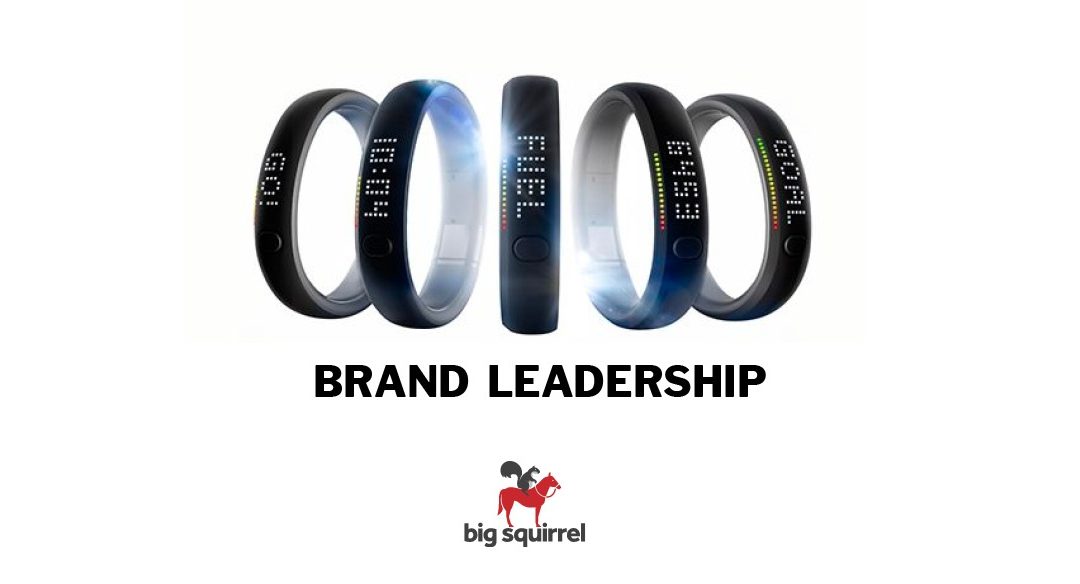
by bigsquirrel | Jun 12, 2013 | Innovative Brand Research
We have been working with Studioriley on a project for Samsung to explore the changes that are happening in the world that affect our work as brand strategists. As part of this collaboration, we’re taking a deep dive into the world of brand leadership to explore what it’s all about in 2013.
Here’s a snapshot of what we have learned:
People have new expectations for what they want from a brand. As individual aspirations have become more personalized, so too have brand expectations and experiences. Brands have had to evolve how they connect with this hyper-networked and globally aware audience, who have an increased self-understanding, changing ambitions and improved tools for pursuing and attaining them.
One significant change: brands no longer have permission to set the standards for what is good or bad for the masses. Instead, evidence shows that people want to express their own unique values and do so in the form of voting, endorsing, “liking” and sharing.
Brands are expected to support and facilitate this shift, helping consumers turn their aspirations into realities by providing information to help them understand and achieve. In an era of information overload, it is important to point out that people aren’t looking for more information, but rather tools that organize and apply information in a way that helps them take action. Information is only valuable in this digital culture when it helps people realize their dreams.
Brand leaders have 5 new actions that demonstrate they support the values of the consumer and enable dreams…
1) BRAND LEADERS SUPPORT CONSUMER VALUES BY ENCOURAGING THOUGHTFUL CONSUMERISM AND RESPONSIBILITY.
In an increasingly connected world, a growing class of global citizens share concerns over issues affecting everyone in the Majority World, from climate change to poverty. Brand leaders are promoting thoughtful consumerism and responsibility by encouraging people to be more aware of how their actions and purchases impact society and affect the environment on a global scale.

Example: Patagonia
By encouraging people to be more thoughtful about their purchasing power and how it impacts the environment globally, Patagonia demonstrates they are part of the human collective, behaving as thoughtfully and responsibly as consumers themselves.
2) BRAND LEADERS SUPPORT CONSUMER VALUES BY FACILITATING NEW WAYS TO WORK.
Who works, where people work and how they work has continued to change rapidly. There is an increased female presence in the workforce, along with an aging population who are delaying retirement. Traditional ideas of what work is or where it is to be done are fading as brand leaders fuel a more collaborative, plugged-in and dynamic workplace; here, productivity and creativity are seamlessly integrated and are no longer thought of as mutually exclusive ideals. Brand leaders have developed new media and technologies that encourage the pursuit of individual aspirations at home and at play, and have begun to encourage these same pursuits at work as well.
 Example: Square
Example: Square
Square represents the result is a rapid rise in small business entrepreneurship worldwide puts the power of the financial transaction in the hands of the small business owner. They facilitate new ways to work by emphasizing fluidity, mobility and collaboration over structure, permanence and stability.
3) BRAND LEADERS SUPPORT CONSUMER VALUES BY INTEGRATING CORPORATE SOCIAL RESPONSIBILITY PRACTICES INTO THE BRAND EXPERIENCE.
Doing good has become a given. Brands can no longer differentiate themselves based on their social responsibility practices. While these actions are clearly important to consumers, they are now considered to be must-haves and must-dos for companies. That said, one significant change we have observed in brand behavior is that the definition of socially responsibility has not necessarily changed, it has expanded: it means doing good for the world (the given) AND it should personally improve the quality of how we live (the new necessity) AND it must enable consumers to take action on their values (the real desire).
Simply giving money has become an empty gesture, and corporate social responsibility has shifted from impersonal, big philanthropic gestures that address major social needs to simple, smaller, more personal and individual initiatives that help everyday people to live better. Consumers want to effect real, genuine and meaningful change in their local communities and the world at large and look to brands to do the same.
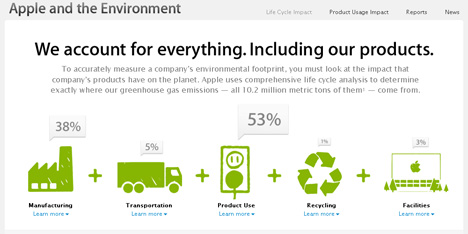
Example: Apple
Transparency, honesty and responsibility are “givens” in todays world, and Apple has pulled back the curtain to reveal their own actions in very rational and simple ways, demonstrating that their behaviors align with those of the consumer and their actions really do speak louder than words.
4) BRAND LEADERS HELP PEOPLE REALIZE THEIR DREAMS BY EMPOWERING THEM TO SHARE.
Every consumer has the power to be a rock star, thanks to technologies like YouTube and GoPro. Documenting and sharing everyday events makes people feel more important and powerful, and has quickly become the norm. Brand leaders are providing a new set of tools to fuel and support the ability to share experiences through visual media, creating a new social currency.
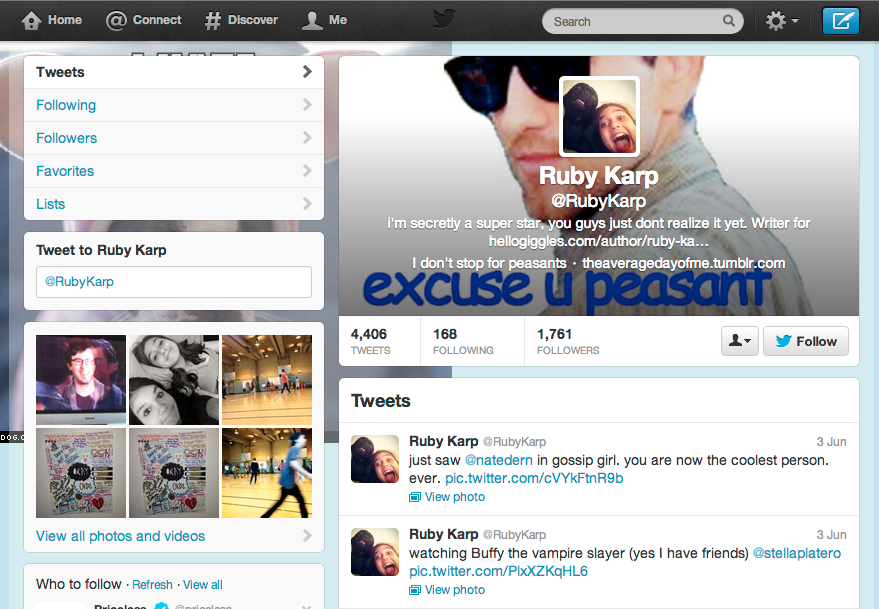
Example: Twitter and Weibo
Hyper-connectivity enables not just creative collaboration, but also story sharing with a broad audience. Some stories are entertaining, some are irrelevant (“I had pancakes for breakfast!”), but some can effect powerful social change. Twitter and Weibo offer outlets for otherwise marginalized communities to tell their stories to the world, joining the “global conversation”, giving rise to the individual hero expressing his or her own voice. Unlike previous generations, people no longer need to rely on the voices of others to tell stories or to unite communities; brand leaders fuel each consumer’s personal ability to share their own stories in their own voices.
5) BRAND LEADERS HELP PEOPLE REALIZE THEIR DREAMS BY PROVIDING TOOLS THAT TRANSFORM DATA INTO PERSONAL INSIGHT.
When data is distilled into visible tools, desires and aspirations become attainable realities. By making information more visual and accessible to consumers, simple yet engaging tools provide personalized information which better informs people’s ability to make decisions.
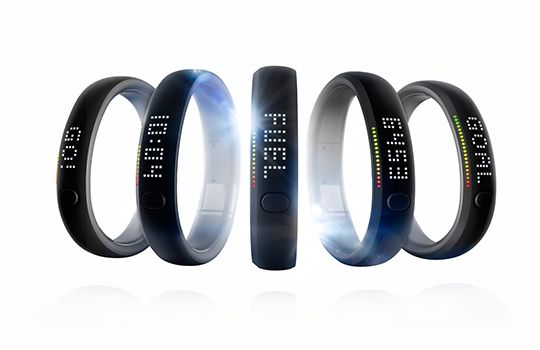
Example: Nike Fuel
Technology just got personal. By turning your daily routine into a stream of helpful, understandable data, Nike Fuel enables consumers to make the decisions needed to achieve their goals. Today’s consumer fully believes they are capable of achieving more than previous generations thought was possible and we now see a newly empowered set of global consumers using digital tools to create bite-sized, digestible goals to make and track progress towards bigger desires and achievements.
What’s the overall takeaway?
Brand leaders are now expected to behave and act differently in response to the changes in how consumers see themselves. To be a brand leader, you must support the values of the consumer and help them realize their own dreams. Simply inspiring people is no longer enough. This is especially important as we consider the growth of entrepreneurial brands and how they are shifting the global landscape and changing how we live.
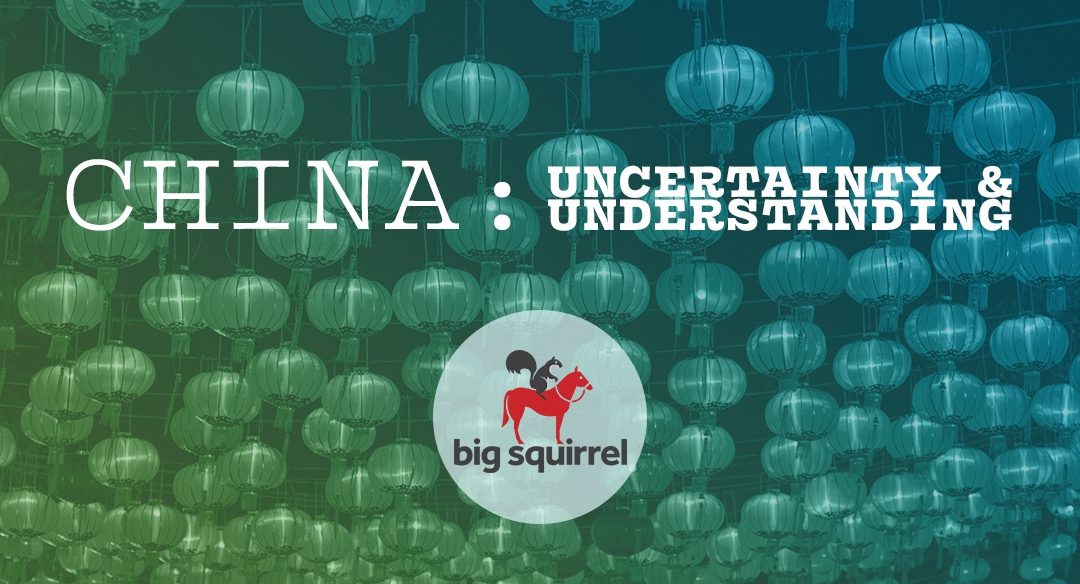
by bigsquirrel | Mar 28, 2013 | Uncategorized
China is a dynamic and rapidly changing country. Steeped in tradition but with an emerging openness to western values like creativity and individualism, China is at a cultural crossroads.
Last year we explored the cultural nuances and behavioral subtleties of China with Johnson’s Baby brand and this year, through our current and ongoing work with Samsung, we’ve been examining the evolving values of Chinese consumers and consumers around the world. From this work, we’ve gained some insights that we believe are important for any brand, company, or even individual to consider if they want to engage and explore this powerful and enigmatic market.
SEEKING THE BEST
As a culture, China seeks the best. To be the best, to buy the best, to make the best decisions. However what is “the best” is becoming more and more uncertain.
Today, as modern influences permeate the culture, tradition is being called into question and the traditional “black and white” perspective of what is right and what is wrong is no longer clear. The desire to have and be the “best” has become increasingly harder to define.
China’s newly elected leader, Xi Jinping expressed the desire for the best when he described the Chinese people:
Our people have an ardent love for life. They wish to have better education, more stable jobs, more income, greater social security, better medical and health care, improved housing conditions and a better environment. They want their children to grow well, have ideal jobs and lead a more enjoyable life. To meet their desire for a happy life is our mission. Source: China Daily
FEAR OF FAKES
The resounding number of counterfeit and imitation products (often containing harmful ingredients) in the Chinese market has forced consumers into a pattern of fear-based decision making.
And no category is immune –– from fake eggs, to fake BMWs, to fake wine, to fake Apple Stores, China is littered with knock-offs. Fear of buying a fake is huge barrier to purchase as consumers feel they can’t trust the brands, products, and companies around them.
In the next few years, gaining the trust of the Chinese consumer will be critical for all brands and businesses. How trust can be established and what it takes to maintain it will require more than just solid product offerings. For those local legacy brands and few Western brands that have established trustworthy relationships with Chinese consumers, maintaining those relationships with openness will be key.
OPTIMISTIC OUTLOOK
Despite widespread mistrust of brands and products, Chinese consumers have a surprisingly optimistic outlook.
Women in particular believe their lives are much more independent and full of opportunity compared to their mothers. They recognize that they are changing, their culture is changing, and how they live is changing. It is an exciting time for women in China and they seem to embrace this evolution with a sense of optimism and hope.
Just recently, Liu Yandong was appointed as one of China’s four new vice premiers, making her the most powerful woman in the Chinese government (and one of the most powerful women in the world).
As China continues to embrace women in leadership roles and as the country defines the Chinese Dream, brands and businesses need to better understand the changing role of women and the influence an emerging sense of optimism will have on consumer behavior, attitudes, and aspirations.
INDIVIDUAL INTERESTS
Social media sites like Weibo have opened China up to global influences and have given China, a traditionally collectivist culture, a means of expressing individual voices, interests and personal preferences.
With a growing focus on Western values, China has become the worlds largest source of students studying overseas in search of an education with a greater focus on creativity and individual contribution. According to statistics from the Chinese Ministry of Education, nearly 400,000 Chinese students studied abroad in 2012, a number that was up more than 17% from 2011.
Though there is a growing interest in individualism, Chinese society is still heavily influenced by the intricate and complicated concepts of mainzi (face) and guanxi (relationships and networks). The key for brands and businesses will be to help the young Chinese consumer pursue their individual interests and construct modern, cosmopolitan identities while at the same time, honor the deeply rooted constructs of traditional Chinese society.

![]()




 Lately it seems like everyone is jumping on the plus sized bandwagon. With mainstream clothing brands like JCrew expanding the sizes they carry in store (and posting apologetic notes about it) to mid-market brands like Target creating their own plus line of clothing, brands and retailers of all kinds are trying to clue in to the needs of a dramatically underserved market. Since plus apparel is a rapidly growing area of retail —
Lately it seems like everyone is jumping on the plus sized bandwagon. With mainstream clothing brands like JCrew expanding the sizes they carry in store (and posting apologetic notes about it) to mid-market brands like Target creating their own plus line of clothing, brands and retailers of all kinds are trying to clue in to the needs of a dramatically underserved market. Since plus apparel is a rapidly growing area of retail — 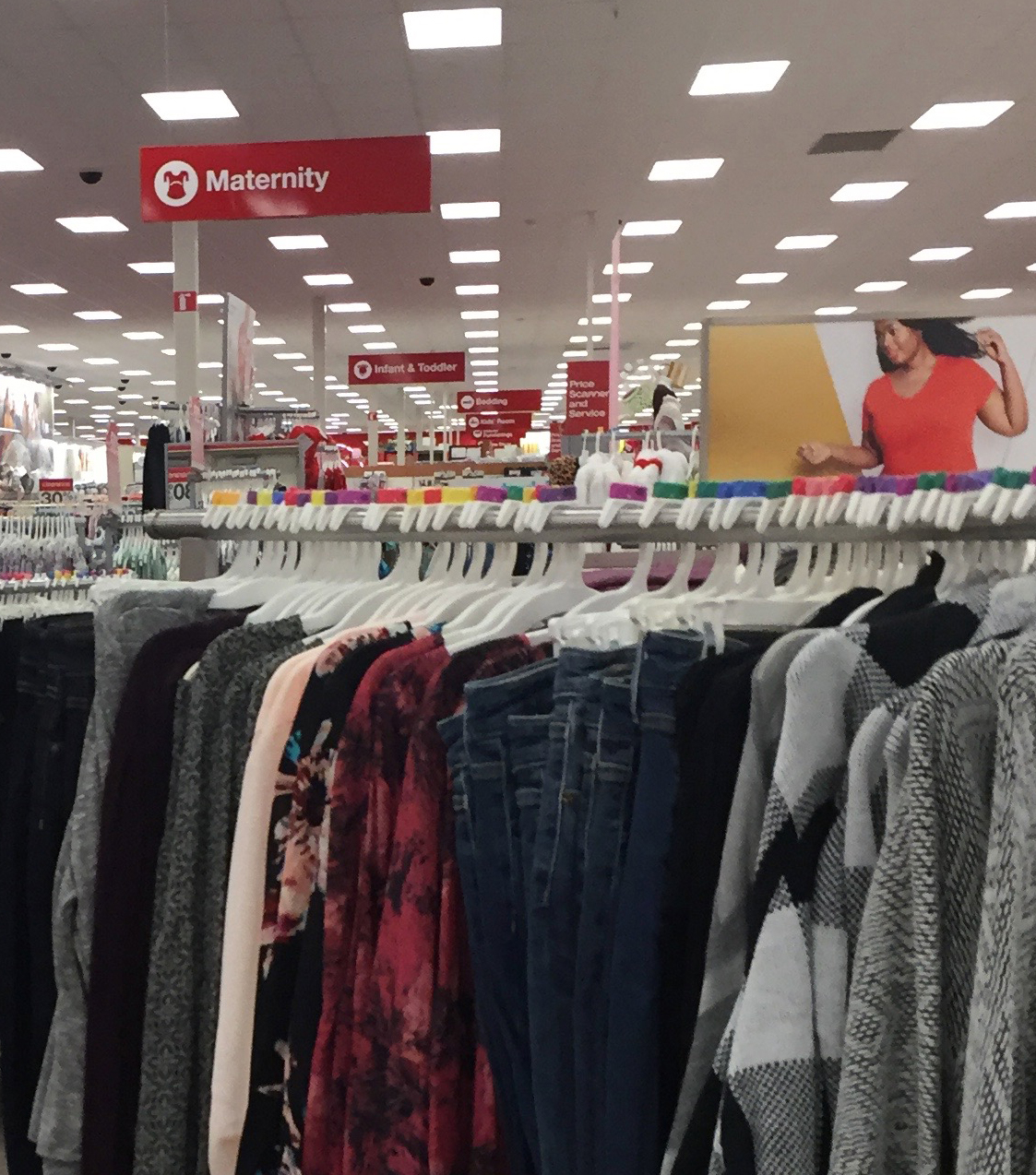
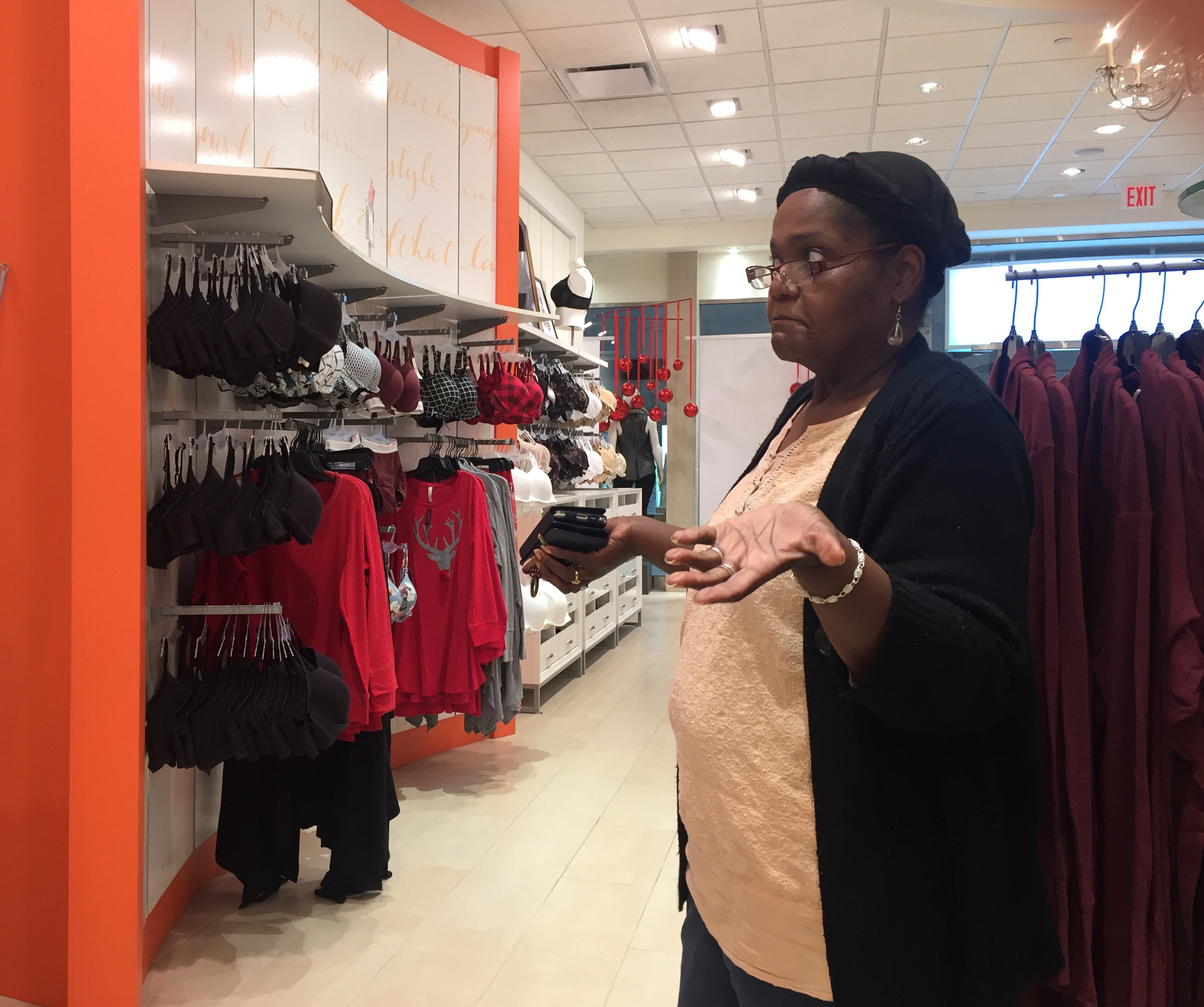


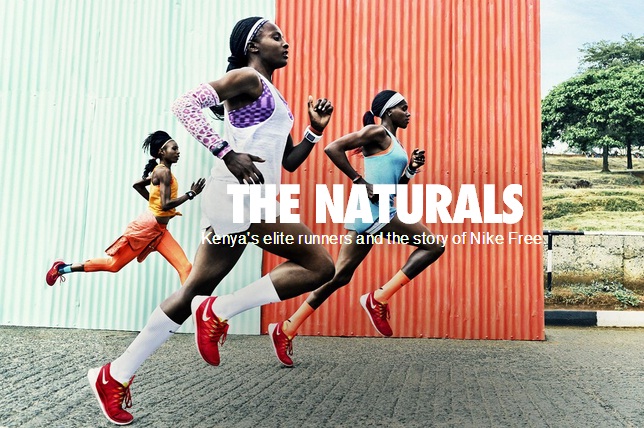
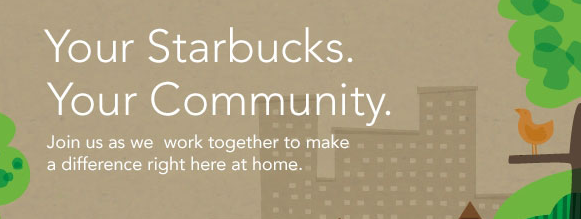

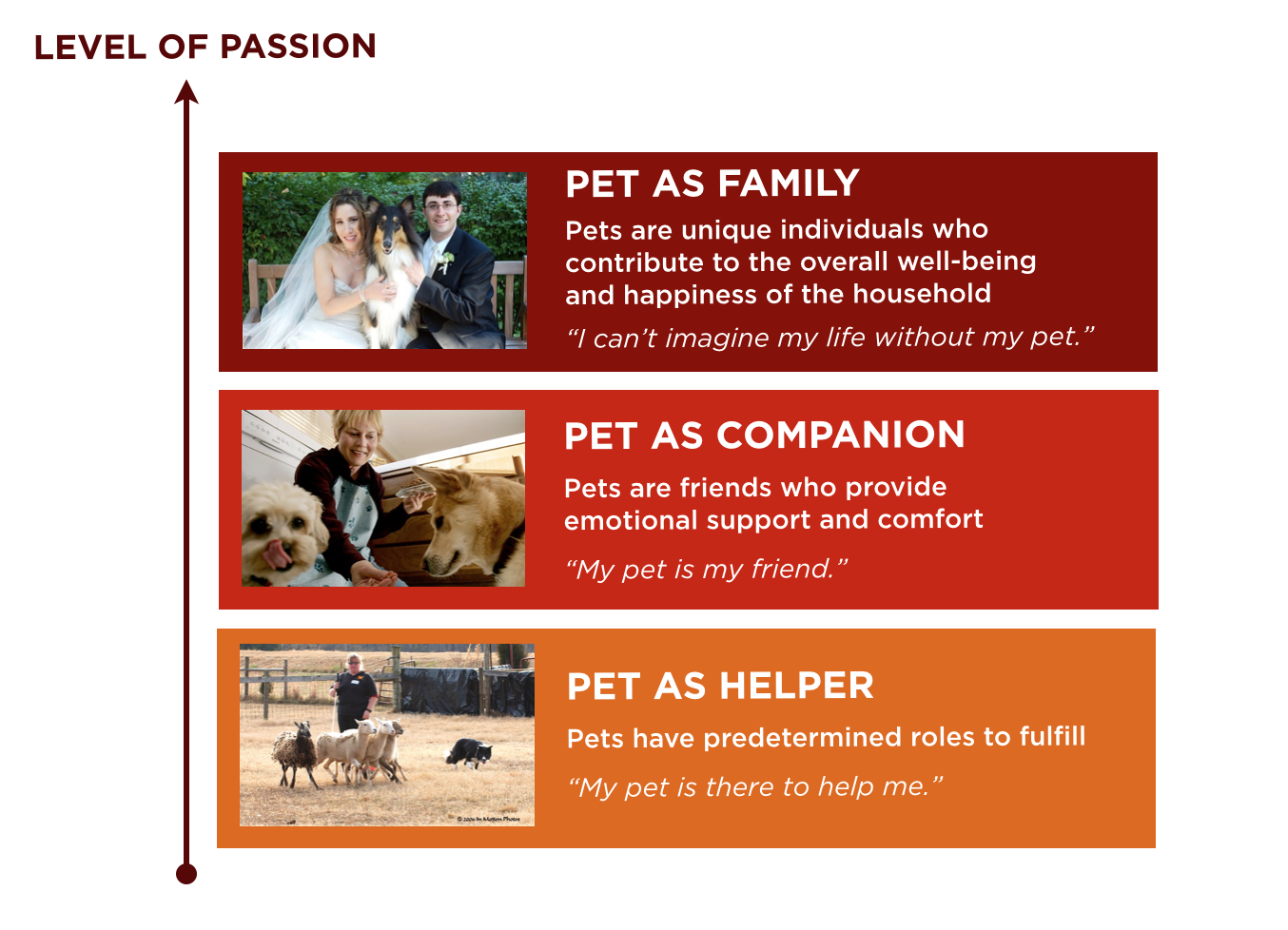
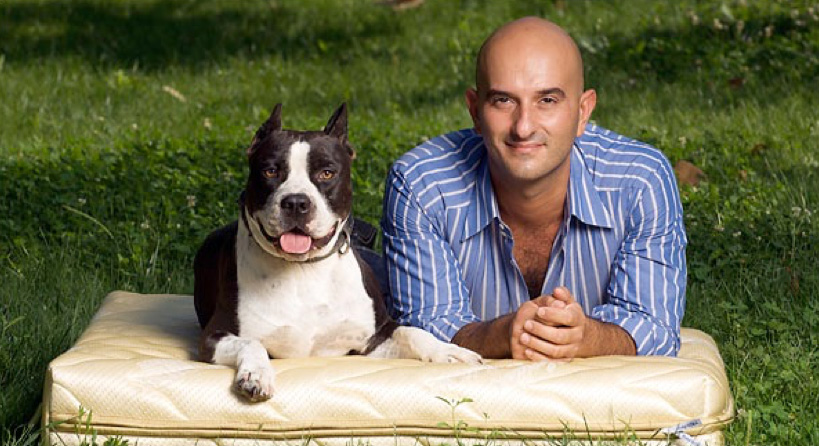


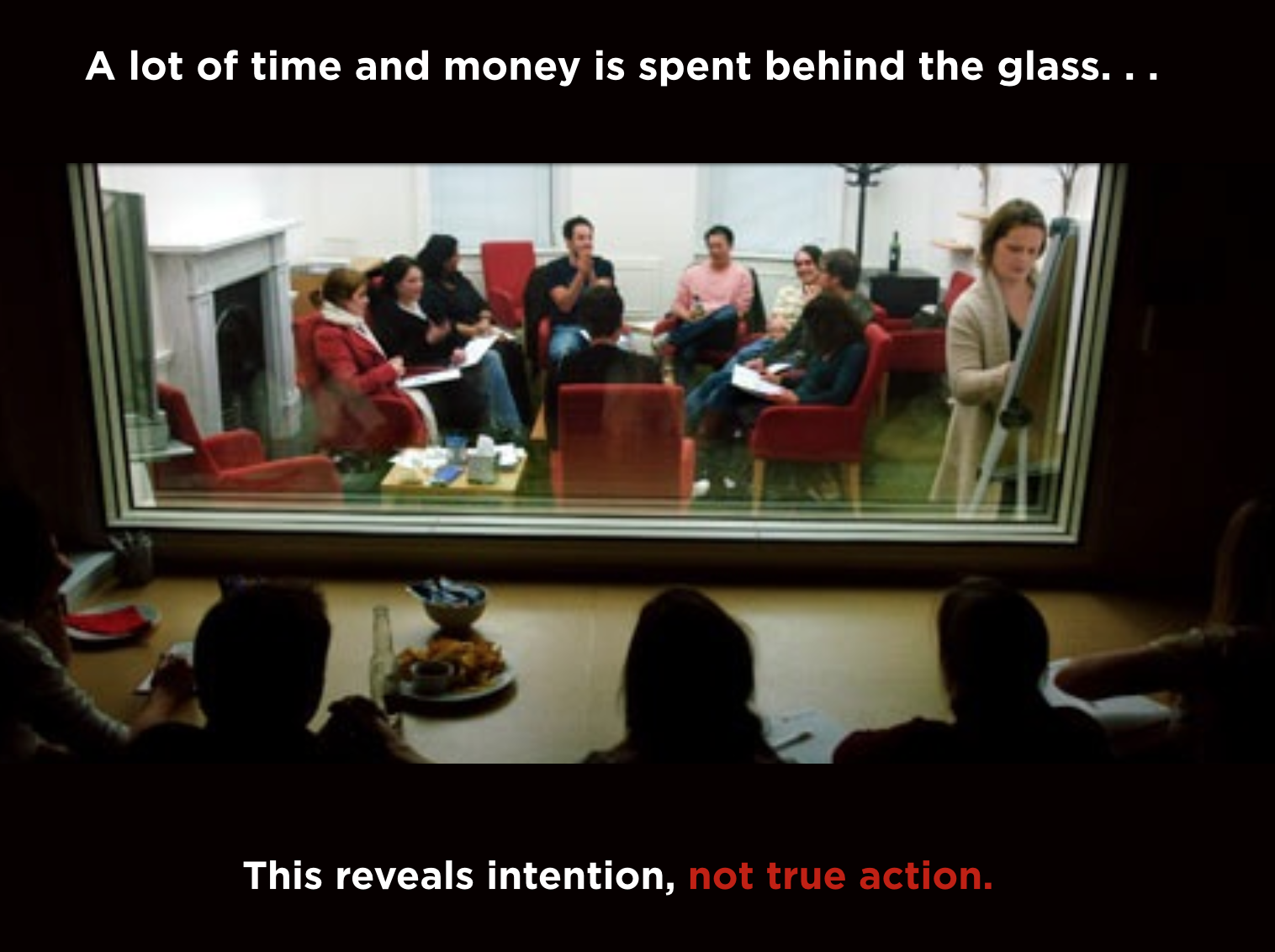





 The field of architecture has historically pulled from the cultures it exists within. Over time, the cultivation of an aesthetic standard for “African”, “Spanish”, and “Roman” architecture emerged. As technology and new media have emerged, the vast physical distances and cultural and geographical boundaries that once separated regions have begun to fade. Architecture has become one of the many fields pulling from the new and growing pool of cultural resources, as architects and designers continue to incorporate other “outside influences” into their work.
The field of architecture has historically pulled from the cultures it exists within. Over time, the cultivation of an aesthetic standard for “African”, “Spanish”, and “Roman” architecture emerged. As technology and new media have emerged, the vast physical distances and cultural and geographical boundaries that once separated regions have begun to fade. Architecture has become one of the many fields pulling from the new and growing pool of cultural resources, as architects and designers continue to incorporate other “outside influences” into their work. Though the ancient practice of Yoga originated in India, its popularity has spread across the globe. The map above from the
Though the ancient practice of Yoga originated in India, its popularity has spread across the globe. The map above from the  The critically acclaimed film Life of Pi received 11 Oscar nominations, reaffirming that it tells a uniquestory. Also unique is the story behind
The critically acclaimed film Life of Pi received 11 Oscar nominations, reaffirming that it tells a uniquestory. Also unique is the story behind  The American Dream as a concept has been alive and well in the United States since the term was first coined in the 1930s. As the global economy continues to grow and change, however, the American Dream is expanding well beyond its original borders. Countries with traditions of self-sacrifice are now experiencing a newfound wealth that enables frivolous spending, shifting the focus from “we” to “me”.
The American Dream as a concept has been alive and well in the United States since the term was first coined in the 1930s. As the global economy continues to grow and change, however, the American Dream is expanding well beyond its original borders. Countries with traditions of self-sacrifice are now experiencing a newfound wealth that enables frivolous spending, shifting the focus from “we” to “me”.
 Example: Nutrition Progress Report
Example: Nutrition Progress Report 

 Example: Ronald McDonald House Charities
Example: Ronald McDonald House Charities 
 Example: Hamburger University
Example: Hamburger University 
 Example: Menu expansion
Example: Menu expansion  Example: My Meal Builder & McDonald’s App
Example: My Meal Builder & McDonald’s App 


 Example: Square
Example: Square


